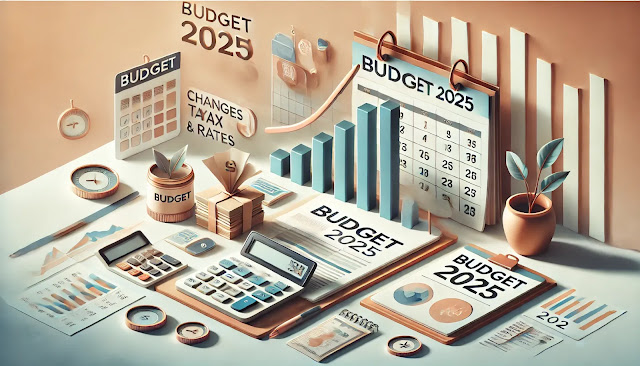The Union Budget 2025, presented by Finance Minister Nirmala Sitharaman, has brought a wave of relief for taxpayers in India. With significant changes in income tax slabs, exemptions for senior citizens, and a focus on middle-class tax benefits, the budget aims to boost economic growth and personal savings. In this article, we will explore the latest income tax slabs for FY 2025-26, key benefits for taxpayers, and what these changes mean for you.
Income Tax Slabs for FY 2025-26: Key Changes and Benefits In a major tax reform, the Government of India has revised the income tax slabs for the fiscal year 2025-26. The new tax structure is designed to benefit taxpayers across various income groups, particularly middle-class earners.
Latest Income Tax Slabs (FY 2025-26):
Rs 0 - Rs 4 Lakh: Nil (No tax payable)
Rs 4 Lakh - Rs 8 Lakh: 5% of income
Rs 8 Lakh - Rs 12 Lakh: 10% of income
Rs 12 Lakh - Rs 16 Lakh: 15% of income
Rs 16 Lakh - Rs 20 Lakh: 20% of income
Rs 20 Lakh - Rs 24 Lakh: 25% of income
Above Rs 24 Lakh: 30% of income
This simplified tax structure aims to reduce the tax burden for the middle class while making the tax system more transparent and user-friendly.
Tax Benefits for Middle-Class Taxpayers:
- In line with the government's efforts to strengthen the middle class, the Union Budget 2025 brings tax relief by reducing tax rates across various income slabs. Under the new tax regime, individuals earning up to Rs 12 Lakh will no longer be liable to pay income tax. This represents a major shift from previous years, ensuring that more take-home pay is available for spending and savings, which is expected to boost household consumption and investments.
- For salaried individuals, the limit is even more beneficial. Salaried taxpayers with an income of up to Rs 12.75 Lakh will not have to pay taxes, thanks to the standard deduction of Rs 75,000.
- Senior Citizens Tax Relief: Another significant highlight of the Budget 2025 is the tax relief for senior citizens. The tax deduction limit on interest income for senior citizens has been doubled from Rs 50,000 to Rs 1 Lakh, allowing them to keep more of their earned income.
Additionally, the government has made changes to Tax Deduction at Source (TDS), rationalizing the number of rates and thresholds to reduce small taxpayers' liabilities, especially for those receiving smaller payments such as rent or interest income.
- Income Tax Rebates and Tax Deduction Benefits: The budget proposes income tax rebates in addition to the new tax slab rates. Taxpayers earning up to Rs 12 Lakh will receive a rebate that reduces their tax liability entirely. For example:
- A taxpayer with an income of Rs 12 Lakh will get a tax benefit of Rs 80,000, effectively nullifying the tax payable under the existing rates.
- A taxpayer with an income of Rs 18 Lakh will benefit by Rs 70,000, reducing 30% of the tax payable.
- Those earning Rs 25 Lakh will receive a tax reduction of Rs 1,10,000, representing 25% of the current tax liability.
How These Tax Changes Affect You:
The changes in income tax slabs and rebates are designed to benefit individuals across various income levels. The tax relief for middle-class and salaried taxpayers is a significant step in recognizing their contribution to India's economic growth. By leaving more money in the hands of the people, the government aims to stimulate demand, savings, and investment across the country.
Conclusion: The Union Budget 2025 has brought a much-needed overhaul of the income tax system, offering substantial relief to taxpayers, particularly the middle class and senior citizens. The revision of income tax slabs, introduction of new tax benefits, and changes to TDS policies are expected to simplify the tax process and encourage savings and consumption. With these changes, the government is working to create a more inclusive, growth-oriented tax structure that will benefit individuals and the economy as a whole.

